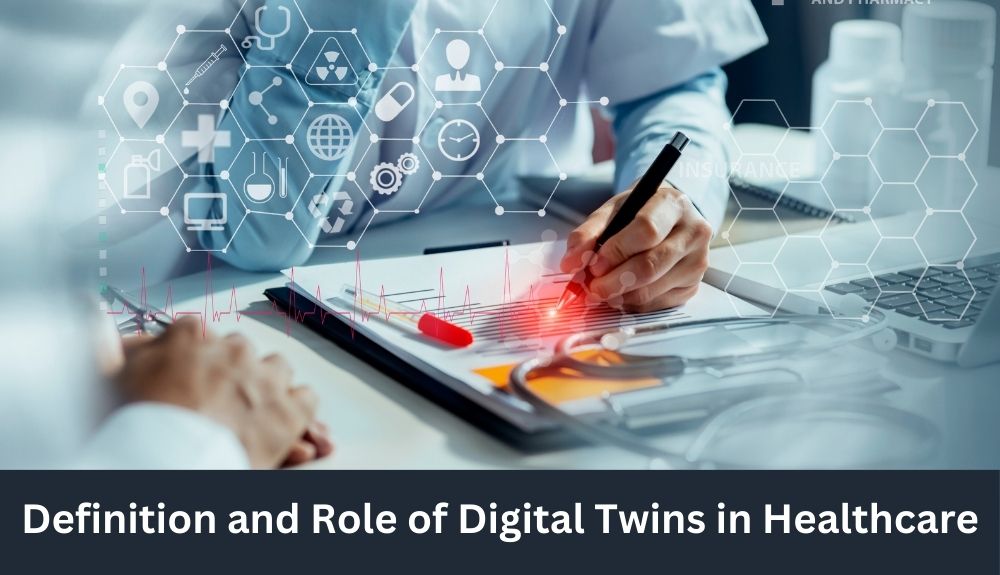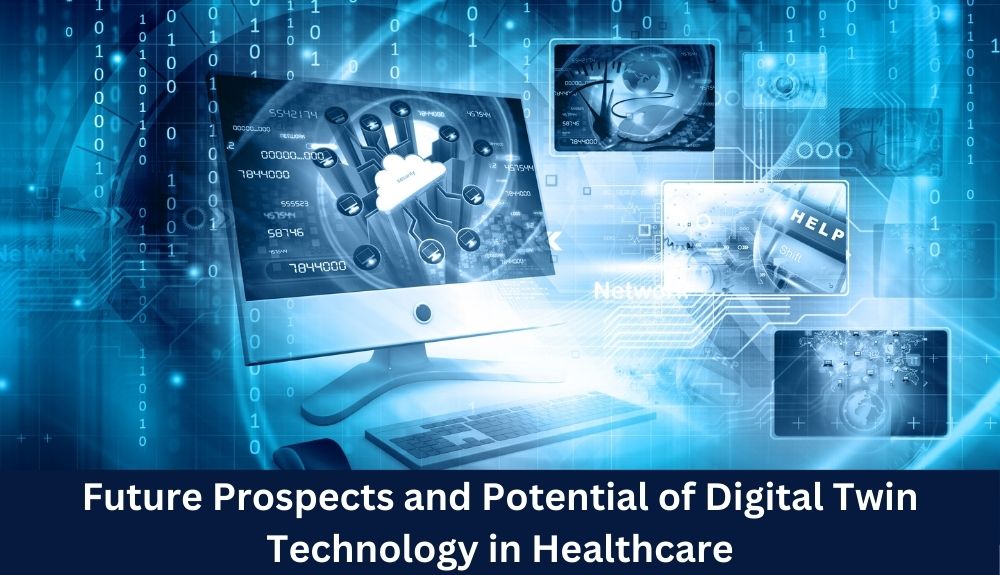Have you ever imagined a world where healthcare providers can predict and tailor treatments to an individual’s unique physiology even before administering any medication or therapy? This futuristic scenario is not so distant, thanks to the groundbreaking innovation of Digital Twin Technology. By creating virtual replicas of actual patients, healthcare professionals can simulate various scenarios, predict outcomes, and optimize personalized treatment plans with unprecedented precision.
Navigating the landscape of Digital Twin Technology in healthcare opens a realm of possibilities and challenges that shape the future of personalized medicine. In this article, we delve into the transformative impact of digital twins on patient care and outcomes, exploring real-world applications, success stories, and the evolving role of artificial intelligence and data analytics in revolutionizing healthcare delivery.
Join us on this enlightening journey as we uncover how Digital Twin Technology is reshaping the healthcare industry, enhancing patient-centric care, and paving the way for a new era of predictive, preventive, and personalized healthcare solutions.
Introduction to Digital Twin Technology in Healthcare
Digital twin technology is revolutionizing the healthcare industry by enabling the simulation of patient physiology for personalized treatment. The concept of digital twins involves creating a virtual replica or simulation of real-world entities, such as healthcare devices or even individual patients. In the context of healthcare, digital twins are utilized to model and analyze patient conditions, allowing healthcare professionals to make data-driven decisions.
The significance of digital twins in healthcare lies in their ability to provide a deeper understanding of patient physiology and personalize treatment plans accordingly. By integrating real-time data from various sources, such as electronic health records, medical devices, and genetic information, digital twins can accurately represent an individual patient’s health status. This allows for the development of personalized therapeutic approaches and the prediction of individual drug responses.
Furthermore, digital twin technology facilitates predictive analytics, where patient data is analyzed to identify potential health risks and optimize treatment plans. Through the use of machine learning algorithms and statistical models, healthcare professionals can leverage the wealth of patient data available to make informed decisions and improve patient outcomes.
In the next sections, we will delve deeper into the definition, applications, advantages, challenges, and future prospects of digital twin technology in healthcare. Through a comprehensive exploration of these topics, we aim to provide a holistic understanding of how digital twins are reshaping healthcare delivery and transforming patient care.
Definition and Role of Digital Twins in Healthcare

Digital twin technology is revolutionizing the healthcare industry by enabling the simulation of patient physiology for personalized treatment. A digital twin refers to a virtual replica or model of a real-world patient, capturing their physiological data, health conditions, and treatment responses in real-time. This technology utilizes advanced algorithms, machine learning, and artificial intelligence to create a comprehensive and dynamic representation of an individual’s health.
The primary role of digital twins in healthcare is to simulate patient physiology, allowing healthcare professionals to have a deeper understanding of an individual’s unique characteristics and respond with personalized treatment plans. This simulation-based approach takes into account multiple factors such as genetic information, medical history, lifestyle, and environmental influences to provide tailored healthcare interventions.
Digital twins have various applications in healthcare settings. For instance, they can be used to predict individual drug responses, helping clinicians avoid adverse events and optimize treatment efficacy. By integrating real-time data from medical devices, electronic health records, and other sources, digital twins enable healthcare professionals to analyze patient conditions, monitor treatment progress, and make data-driven decisions.
Furthermore, digital twins facilitate the development of patient-specific treatment plans by considering an individual’s unique physiology. This personalized approach improves treatment outcomes and reduces the risk of complications. By leveraging predictive analytics, digital twins can assist in disease treatment, surgical procedures, and even drug discovery.
In summary, digital twin technology plays a crucial role in simulating patient physiology for personalized treatment in the healthcare industry. By leveraging real-time data integration, predictive analytics, and patient-specific modeling, digital twins are improving healthcare delivery, optimizing treatment plans, and revolutionizing personalized healthcare.
Advantages and Benefits of Digital Twins in Healthcare
Digital twin technology has emerged as a powerful tool in the healthcare industry, bringing numerous advantages and benefits to both patients and healthcare providers. By simulating patient physiology and enabling personalized treatment, digital twins are revolutionizing healthcare delivery. Here are some key advantages and benefits of using digital twin technology in healthcare:
Improved Treatment Outcomes
Digital twins allow healthcare professionals to gain a deeper understanding of each patient’s unique physiology by creating a virtual replica of their biological systems. This enables personalized treatment plans tailored to individual needs, leading to improved treatment outcomes. Through accurate simulations, healthcare providers can predict the response of specific treatments, allowing for more effective and targeted therapies.
Personalized Therapies
With digital twins, healthcare professionals can design personalized therapeutic approaches for each patient. By analyzing real-time data from sensors, medical devices, and electronic health records, digital twins provide valuable insights into patient conditions. This personalized approach can greatly enhance the effectiveness and safety of treatments, considering individual variations in genetics, lifestyle, and environmental factors.
Predictive Analytics
Digital twins integrate vast amounts of patient data, facilitating the application of advanced analytics and machine learning algorithms. This enables predictive analytics, where data patterns are analyzed to forecast patient outcomes and identify potential health risks. By leveraging these insights, healthcare providers can proactively intervene and deliver timely interventions, reducing the likelihood of adverse events and improving overall patient well-being.
Enhanced Decision-Making
By leveraging the power of digital twins, healthcare professionals can make data-informed decisions with greater confidence. Digital twins provide a comprehensive and real-time view of patient conditions, empowering healthcare providers to design optimal treatment plans. This integration of data from various sources, combined with sophisticated statistical models and machine learning algorithms, empowers healthcare professionals to adopt a more proactive and precise approach to care.
Efficient Clinical Trials
Digital twins have the potential to revolutionize the drug discovery and development process by enabling virtual clinical trials. By simulating patient responses to new drugs or treatment strategies, digital twins can expedite the evaluation of potential therapies while minimizing risks to patients. This has the potential to accelerate the delivery of life-saving treatments to those in need.
In conclusion, digital twin technology offers significant advantages and benefits in healthcare, including improved treatment outcomes, personalized therapies, predictive analytics, enhanced decision-making, and more efficient clinical trials. As this technology continues to evolve, its potential to revolutionize personalized healthcare becomes increasingly evident. By combining the power of simulation, data analytics, and artificial intelligence, digital twins have the potential to reshape the future of healthcare.
Challenges and Limitations of Implementing Digital Twin Technology in Healthcare
Implementing digital twin technology in the healthcare industry comes with its own set of challenges and limitations. While the potential benefits are immense, it is important to address these obstacles to ensure the successful integration of digital twin technology into healthcare systems.
1. Data Privacy and Security Concerns
One of the primary challenges is the protection of sensitive patient data. Digital twins rely on real-time data integration from various sources, including electronic health records, medical devices, and genetic information. Ensuring the privacy and security of this data is crucial to maintain patient trust and comply with regulatory requirements. Robust data encryption, access controls, and secure data storage systems are essential to address these concerns.
2. Interoperability Issues
The integration of digital twin technology requires seamless interoperability among different healthcare systems and platforms. Healthcare providers often use a variety of software and technology solutions that may not be compatible with each other. Achieving a standardized framework for data exchange and interoperability is essential to enable the efficient sharing and analysis of patient data across the healthcare ecosystem.
3. Clinical Validation and Adoption
Validating the effectiveness and reliability of digital twin technology in clinical settings is another challenge. Rigorous testing and validation processes are needed to ensure that the simulations and predictions generated by digital twins accurately reflect real-world patient conditions. Additionally, healthcare professionals need to be educated about the benefits and potential applications of digital twin technology to drive its widespread adoption.
4. Ethical Considerations
The use of digital twin technology raises ethical considerations, particularly in terms of patient consent and autonomy. As digital twins may involve making decisions based on predictive analytics and simulations, healthcare providers need to ensure that patients are fully informed and involved in the decision-making process. Respecting patient autonomy and confidentiality is crucial to maintain ethical standards in the implementation of digital twin technology.
Overcoming these challenges will require collaborative efforts from healthcare organizations, technology providers, and regulators. By addressing data privacy concerns, promoting interoperability, validating clinical efficacy, and upholding ethical principles, the implementation of digital twin technology in healthcare can lead to improved patient outcomes and personalized treatment approaches.
Future Prospects and Potential of Digital Twin Technology in Healthcare

The future of healthcare is being shaped by the advancements in digital twin technology. This innovative approach allows for the creation of virtual replicas of patients, enabling healthcare providers to revolutionize personalized treatment and improve patient outcomes.
Advancements in Precision Medicine
Digital twin technology has the potential to revolutionize precision medicine. By simulating patient physiology in real-time, healthcare professionals can gain valuable insights into individual patient responses to treatments and interventions. This allows for the development of personalized therapeutic approaches based on an individual’s unique characteristics and needs. With digital twins, healthcare providers can optimize treatment plans and significantly enhance patient care and quality of life.
Predictive Patient Analytics
Another exciting prospect is the use of digital twin technology for predictive patient analytics. By integrating patient data from various sources, including electronic health records, medical devices, and genetic information, digital twins can generate valuable predictive insights. This enables healthcare professionals to anticipate and prevent adverse events, optimize treatment interventions, and improve overall patient outcomes.
In conclusion, the potential of digital twin technology in healthcare is immense. From enabling precision medicine to revolutionizing patient analytics, digital twins are paving the way for personalized and data-driven healthcare. As this technology continues to evolve, we can expect exciting advancements that will ultimately reshape the future of healthcare delivery and patient care.
Conclusion
In conclusion, digital twin technology is revolutionizing healthcare by simulating patient physiology for personalized treatment. Through the use of advanced simulation technology and real-time data integration, digital twins offer numerous benefits and opportunities in the healthcare industry. By creating virtual patient avatars and leveraging predictive analytics, healthcare professionals can optimize treatment plans, predict patient outcomes, and deliver personalized therapies. However, the implementation of digital twin technology also presents challenges, such as concerns about data privacy, security, and interoperability. Despite these challenges, the potential of digital twin technology in healthcare is vast, with future prospects including advancements in precision medicine and predictive patient analytics. As the healthcare industry continues to embrace digital twin technology, we can expect transformative changes that improve patient outcomes and revolutionize personalized healthcare delivery.



